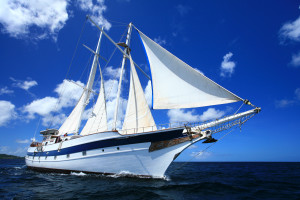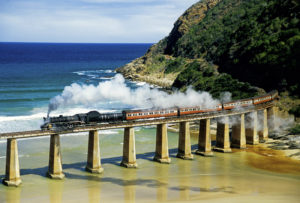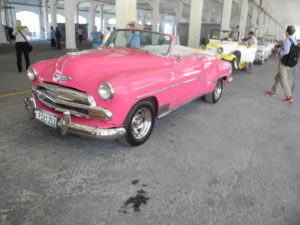
The Diamant, Island Windjammers’ 12-passenger sailing ship. Photo from Island Windjammers
How you get to where you’re going can be just as crucial to the success of your trip as the destination itself.
And in some cases, the mode of transport is, in effect, the destination.
Ocean cruises are an obvious example of the latter.
When you choose to see the world by cruise ship, you’re committing yourself to spending most of your time at sea and limiting your sightseeing on land to ports or places that are within a few hours’ drive by tour bus, taxi, or rental car from the ports.
But ocean- and sea-going vessels come in many shapes and forms — from small sailing ships to floating behemoths — that can make for entirely different journeys themselves.
Or say you want to take the Trans-Siberian Express (train) from China to Russia. While you have the possibility to see the countryside and some sights along the way, for most passengers the epic train ride itself is the big draw.
When you take a road trip in a car or RV, yes, you’re usually headed to a particular destination, but the act of driving itself — “hitting the road” and seeing what develops along the way — is what excites many travelers.

South Africa: Outeniqua Choo Tjoe steam train crossing tressel at mouth of Kaimans River on Indian Ocean. Photo by Dennis Cox/WorldViews
Flying commercially is probably the one major form of transport that people usually rely on just to get from one point to another, rather than the flying experience itself (though it can be thrilling to gaze down at the earth from 30,000-plus feet, as countries and landscapes go by).
The Right Form(s) of Transportation May Not be Obvious
I recently talked with baby boomer friends who were planning a driving trip through northern Italy, where they had never traveled . After flying into and renting a car in Switzerland, they were going to drive first to Venice (staying three days) and then to Florence for three days and around Tuscany for another few days before driving back to Zurich.
I suggested they rethink their plan, and take trains from Zurich to Venice and Venice to Florence, then rent a car at the end of their stay in Florence to drive around Tuscany. After dropping off the rental car in Florence, they could then take a train back to Zurich.
Here are the reasons:
- It’s pointless to have a rental car in Venice, since no cars are allowed there, so you’re paying for parking your car outside the city. The drive down from Zurich is beautiful, but so is the train ride.
- The train ride from Venice to Florence is easy and you won’t get hit by the high price of gasoline and highway tolls as you do when driving. Most trains in Europe are clean, prompt, comfortable, and convenient — with numerous scheduled runs between major cities like Venice and Florence.
- It’s almost as pointless to have a rental car in Florence as it is in Venice. Most everything is within easy walking distance. Meanwhile, traffic and parking can be murder, and many streets are narrow, winding, and filled with congestion of all types.

Driving a classic American car is the classiest way to get around Havana. Photo by Clark Norton
So for the first week or so, they’ve completely eliminated the need for or expense of a rental car and instead will travel on foot and in the comfort of a modern train system.
And they may be be able to save money by buying a two-country train pass from Rail Europe for their train trips between Switzerland and Italy and within Italy. Some passes allow for a limited number of rides within a certain time period, such as two or three weeks.
Then they can drive where they’ll enjoy it most, through the Tuscan countryside, and where train travel is slower and less convenient for visiting out of the way hill towns.
Planning is the Key
While my suggested alternatives would be pretty obvious to veteran Italy travelers, if you’ve never been to a destination, how do you know what the best means of transport are in a particular area?
My friend,. the husband of the aforementioned couple, has always loved to drive, so that was his default assumption — to rent a car throughout the trip. But it would have proved more expensive and more aggravating on several levels.

Walking is always an option. Photo by Catharine Norton
My general suggestion to everyone is to give transportation as much advanced planning (or more) than to what you’ll see and do at your destination.
In most cases, the sights and attractions will be easy enough to find. The modes of getting to them, maybe not so much. And they can make or break a trip.
NEXT UP: a primer on some of the best ways of getting around in various parts of the world. Should you take a sea cruise, a river cruise, a ferry, a train, fly, drive (rent a car or RV), or board a bus? Stay tuned.










One Response to Baby Boomer Travel Guide: Transportation